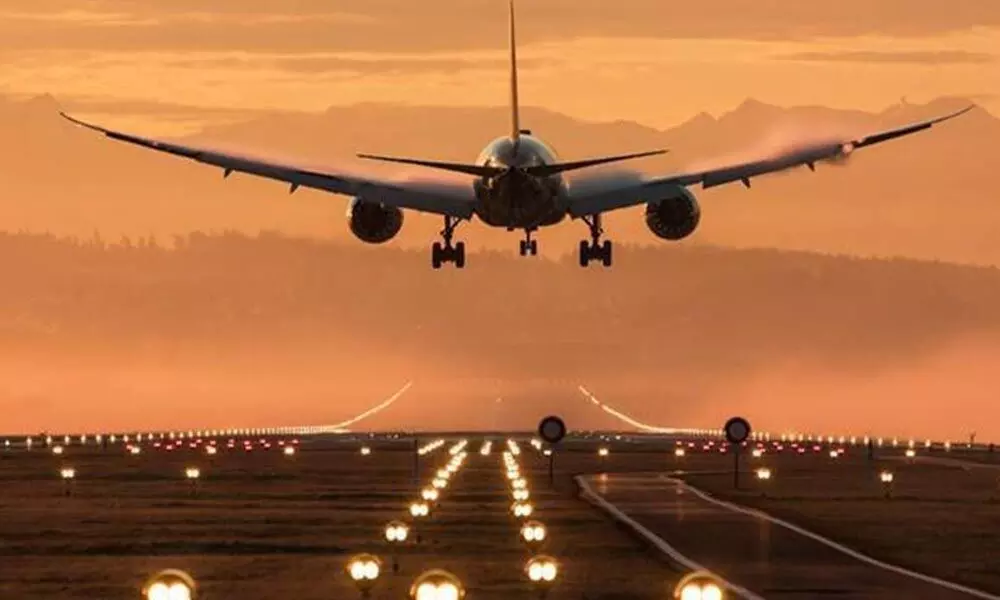Tech backed agility key for better aviation management
Emerging technologies such as AI, machine learning and predictive analytics can enable cost reduction and operational efficiencies
image for illustrative purpose

Agility would certainly disrupt the 'legacy' way of doing things, rather than planning network changes for the end of the season or next year, an agile airline would be iterating continuouslyits process of identifying where the demand is stronger or weaker than expected and tweakingprices accordingly
Today, airline and airport players must anticipate trends and plan resource utilisation to optimise costs and reliability. The ability to reduce costs while increasing operational efficiency is critical now more than ever before. Emerging technologies such as artificial intelligence (AI), machine learning (ML) and predictive analytics can enable cost reduction and operational efficiencies.
An equally important capability that technology can foster is agility. By being agile, airline and airport companies can be resilient to market changes by accurately predicting market demand using cognitive technologies. Such capability would allow them to remain competitive and profitable. Further, they must augment their capacity and operations in real-time on the back of preventive maintenance. With deep-learning AI algorithms and Internet of Things (IoT) technologies such as the digital twin, it is possible to predict which aircraft need preventive maintenance. Similarly, airports can undertake corrective and predictive maintenance to identify and service assets that are likely to break down.
Of course, upholding safety and controlling costs will be given. The key word is 'uncertain', if nobody is sure how the recovery will unfold, those carriers with the best chance of success are those who can configure themselves to be as resilient and responsive as possible. Darwin's 'survival of the fittest' will apply to those who are best adapted for uncertainty."It is not the strongest of the species that survives, nor the most intelligent, but the one most responsive to change," said Charles Darwin in 1809.
Agility would certainly disrupt the 'legacy' way of doing things: rather than planning network changes for the end of the season or next year, an agile airline would be iterating continuously: identifying where demand is stronger or weaker than expected, tweaking prices in different markets to evaluate elasticity, adjusting schedules to trial different options and then doing it all over again the next week.
On the operational side of the house, wet-lease carriers (also known as ACMI carriers) enable airlines to deploy new capacity at relatively short notice if demand on a route exceeds in-house capacity (perhaps not a likely scenario in the near future), or conversely if an airline's own aircraft are too large for newly diminished demand. ACMI carriers face a challenging future but perhaps the best hope lies with those who can help network airlines downsize, for example by enabling the replacement of mainline aircraft with regional jets.
Financial woes aside, the pandemic's longer-term effects on aviation are emerging. Some of these are obvious: hygiene and safety standards will be more stringent, and digitalisation will continue to transform the travel experience. Mobile apps will be used to store travellers' vaccine certificates and Covid-19 test results.
Advanced software-based solutions are proving effective in helping airports quickly identify employees potentially affected by the SARS-CoV2 infection. These solutions are working in conjunction with other optimization software solutions, through which a contact tracer web-based application can utilize historical data relating to tasks being managed by the application. This enables airport management to determine which staff worked with other staff members, at what times, and in what locations. Equipped with this data, the contact tracer's functionality can visualise an infected person's history of contacts. This can be displayed as an on-demand report or in a standalone web application. The data then can be applied to make real-time operational adjustments including issuing a quarantine plan to isolate only potentially infected individuals, thereby facilitating staff adjustments, as needed, and avoiding large-scale isolations, which would have a more negative effect on operations.
The maintenance of the increasing number of parked aircraft at airports also demands special attention during the pandemic. If the aircraft is to return to service, scheduled maintenance programs must be upheld. Since these aircraft are not flying, the authorities have made exceptions to the routine daily or weekly checks. Among the agencies providing guidance in this area is the European Union Aviation Safety Agency (EASA).
Intelligent software and digital technologies also help facilitate pandemic-related safety and operational efficiency in other areas. The allocation of gates, aircraft positions and terminal resources are supported along with alternative plans to address 'What if' scenarios. Airports can continuously optimise their management of gates, stands, counters, baggage belts, etc., based on current flight information, while accommodating new requirements introduced as a result of the pandemic. Optimisation software also helps airports in their social distancing goals within check-in counters and baggage drop and claim areas.
While governments have stepped in with financial assistance, and airline/airport cooperation has helped in the resuming of air travel, there remains a long road ahead to recovery. Optimistic projections are that traffic volumes may reach pre-Covid levels by the end of 2021. Less optimistic projections, including those by the credit agencies, are predicting a 24-month recovery.

